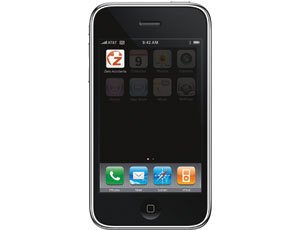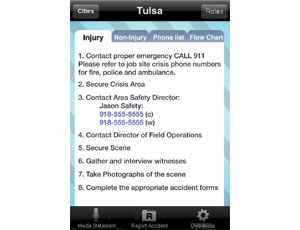When construction accidents occur, responders must master anxiety, adrenalin and even panic to ensure crisis plans click into place.


Now, there is an app for all that.
Tulsa, Okla.-based Flintco Construction LLC has partnered with an iPhone app developer to create a crisis management tool based on disaster plans Flintco maintains at jobsites in 30 states.
The crisis-response protocols now are stored on the iPhones of 400 supervisors and executives. Based on which employee’s phone launched it, the app knows where the incident occurred, the user’s job role and whom to contact to launch the cascade of responses. It is as simple as tapping on a screen.
“Emotions run high, adrenalin mounts and even dialing a phone number can become monumental,” explains John A. Martin, Flintco’s Texas division president and the originator of the idea. “We were updating our crisis flowchart, and it just seemed we could do better than another three-ring binder.”
Martin says the initial idea was a flowchart with numbers that, when tapped, automatically dialed. But when they described it to Jessica Dyer, president of Emerge Mobile Tech, Tulsa, she saw something else.
“I immediately thought, ‘This has legs. We can take it further,’ ” she says. They made a deal that, as long as Flintco was served, the app would be Dyer’s to market. “We want to change the industry, to make it safer,” explains Martin. “Safety is not proprietary.”
The app uses the cell-phone network to link contacts and push updates. It ties into Flintco’s employee management system, finds chains of responsibility and navigates the firm’s crisis management plan. It prompts each person to take the steps their job role requires.
“We wanted something we could keep dynamic as jobsites open and close and people move around,” Martin says. “It is so much more powerful than the initial idea [was].”
The app even had its first real trial after a Flintco superintendent suffered a broken leg in September. Martin was alerted immediately. Although he was at an off-site meeting, it prompted him on the response required by his own role.
The project went so quickly—six months from an idea to deployment—Dyer has not even named her product yet, although her next customer, a utility company, aims to deploy it in March. “I have been focusing all my energy on getting it deployed and seamless,” she says. “Now it’s good to go. It is truly the birth.”



Post a comment to this article
Report Abusive Comment